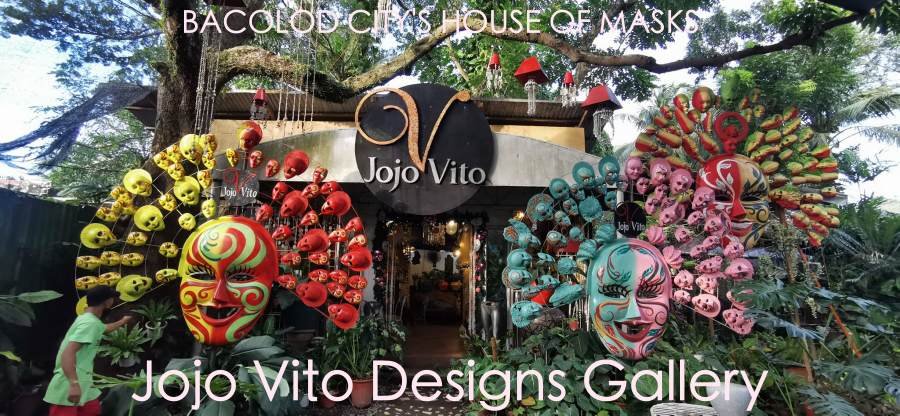![Boljoon Church [ Archdiocesan Shrine of Patrocinio de Maria Santisima ]](https://www.fabasianlifestyle.com/wp-content/uploads/2024/03/boljoon-429780140_10159885078773017_5752559525293076344_n.jpg)
Boljoon Church
Table of Contents
Rediscovering Boljoon Church: A Journey Through Time
Introduction:
In the heart of Boljoon, Cebu stands a silent sentinel of history and faith, Boljoon Church, known officially as the Archdiocesan Shrine of Patrocinio de Maria Santisima. As a fervent blogger and seeker of cultural treasures, my recent expedition brought me back to this timeless sanctuary, where the past intertwines with the present in a mesmerizing dance of heritage and tradition.
![Boljoon Church [ Archdiocesan Shrine of Patrocinio de Maria Santisima ]](https://www.fabasianlifestyle.com/wp-content/uploads/2024/03/boljoon-429985163_10159877401818017_1665635018553340804_n.jpg)
A Return to Boljoon: The Beginning of a Journey
As I embarked on my journey to Boljoon, memories of my previous visit flooded my mind, painting vivid images of a place steeped in history and charm. It felt like a journey back in time, a pilgrimage of sorts, fueled by an insatiable thirst for knowledge and adventure. Accompanied by the spirited team from the City Agriculture Office of Himamaylan, including CG Hisona and Mark Canieso, I eagerly anticipated the wonders that awaited us in this historic town.
![Boljoon Church [ Archdiocesan Shrine of Patrocinio de Maria Santisima ]](https://www.fabasianlifestyle.com/wp-content/uploads/2024/03/boljoon-430012582_10159877402043017_2445255880855713990_n.jpg)
The main objective of our visit to Boljoon was to conduct a team-building activity for the City Agriculture Office of Himamaylan. We arrived at the place in the afternoon and decided to spend some time first exploring the area. The road to Boljoon was lined with lush greenery, offering a refreshing respite from the bustling city life. As we approached the town, the sight of the centuries-old Boljoon Church standing majestically against the backdrop of the blue sky and the sea filled me with awe. It was a reminder of the rich cultural heritage and the enduring spirit of the Filipino people. Our visit was not just a sightseeing tour; it was an opportunity to learn from the past and gain a deeper appreciation for our roots.
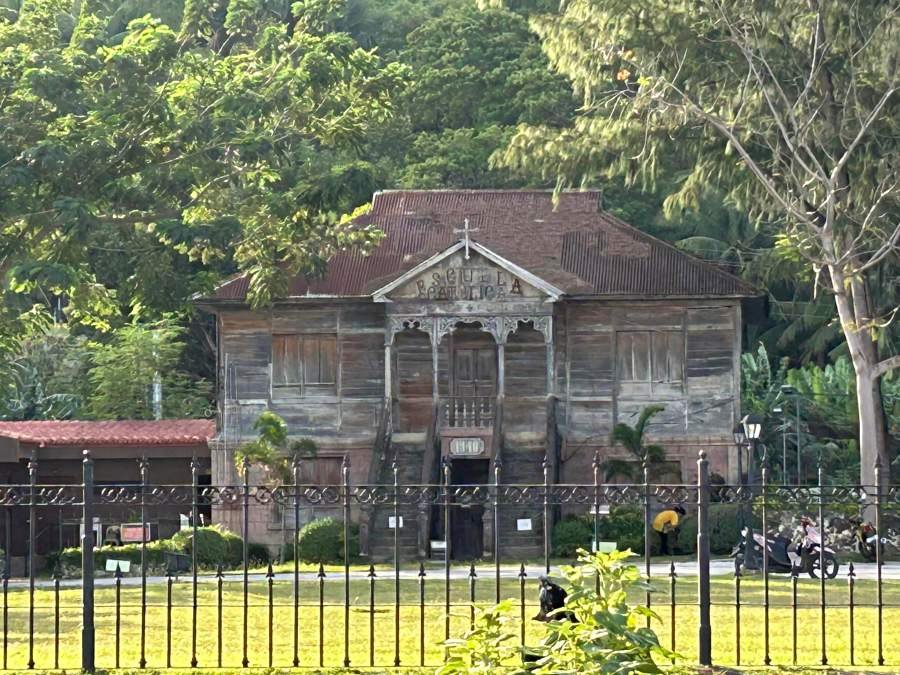
The National Sensation: Boljoon Church Archaeological Findings at Boljoon Church
The Boljoon Church, also known as Nuestra Señora del Patrocinio de Maria Parish Church, holds a profound historical significance dating back to the Spanish colonial period in the Philippines. I vividly recall when the church became a national sensation in recent years due to significant archaeological findings on its grounds. This event sparked my curiosity about the place, prompting me to learn more about its history and cultural heritage.
Constructed in the early 18th century, this church stands as one of the oldest stone churches in Cebu province, celebrated for its baroque architecture and historical prominence. In 2007, the National Museum of the Philippines undertook archaeological excavations around the church complex, unearthing a plethora of artifacts and structures dating back to the Spanish era.
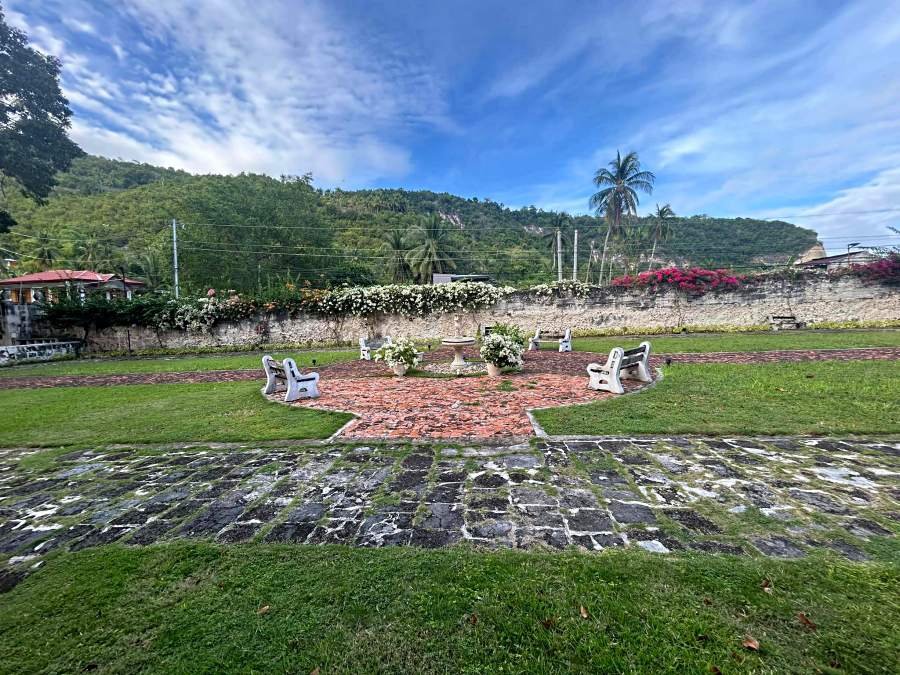
Among the discoveries were remnants of an ancient cemetery, alongside artifacts such as pottery, coins, and religious relics. These findings shed light on Boljoon’s early history and its pivotal role as a hub of Spanish colonial governance and Catholic influence. The uncovering of these artifacts piqued widespread interest and curiosity, leading to extensive coverage by national media outlets and drawing tourists and historians eager to delve deeper into Boljoon’s past.
The revelations from the excavation not only added layers to Boljoon’s historical tapestry but also underscored the imperative of preserving and safeguarding its cultural legacy for future generations. Archdiocesan Shrine of Patrocinio de Maria Santisima stands as a poignant testament to the Philippines’ rich history and cultural heritage, captivating visitors from near and far with its architectural splendor and historical significance.
![Boljoon Church [ Archdiocesan Shrine of Patrocinio de Maria Santisima ]](https://www.fabasianlifestyle.com/wp-content/uploads/2024/03/BOLJOON-429977762_10159877402113017_3468956812511365273_n-1.jpg)
Boljoon Church: A Beacon of Faith and Heritage
Upon our arrival in Boljoon, the imposing silhouette of Boljoon Church greeted us, its weathered facade bathed in the golden hues of the setting sun. The air hummed with a sense of reverence as we stepped into the sanctuary, the echoes of centuries past whispering secrets of faith and fortitude.
Boljoon Church stood as a testament to the resilience of the Filipino spirit, its sturdy coral stone walls bearing witness to the trials and triumphs of generations gone by. The intricate carvings adorning the altars and pulpit spoke of a bygone era, where artistry and devotion converged in a symphony of faith.
![Boljoon Church [ Archdiocesan Shrine of Patrocinio de Maria Santisima ]](https://www.fabasianlifestyle.com/wp-content/uploads/2024/03/boljoon-430050808_10159877402833017_2395985295655943271_n.jpg)
Exploring the Enchanting Complex of Boljoon Church
As I wandered through the Boljoon Church and its complex, guided by a local, I couldn’t help but marvel at the intricate details and historical significance of this fortress church. Built of coral stones on a hill overlooking the sea, it served as a watchtower during the time of Moro raids.

The church’s terracotta roof tiles and Filipino Baroque style, especially evident in its choir screen and pulpit, spoke volumes about its architectural beauty and cultural importance. Walking around, I was struck by the sheer strength of the church’s construction, with its 2-meter thick walls supported by twenty-eight pillars made of mortar and lime. The ceiling paintings, the work of Miguel Villareal, a Boljoon native, added a touch of artistic flair to the church’s interior.
The main retablo, with its pseudo-baroque rococo style, gleamed with gold leaf highlights and polychrome accents, drawing my gaze to the central niche housing the image of Our Lady of the Patronage, brought from Spain in 1599. The rectangular bell tower, once home to seven bells, fascinated me with its dual purpose as a prison cell, possibly for pirates, as depicted by the ship drawings on its walls.
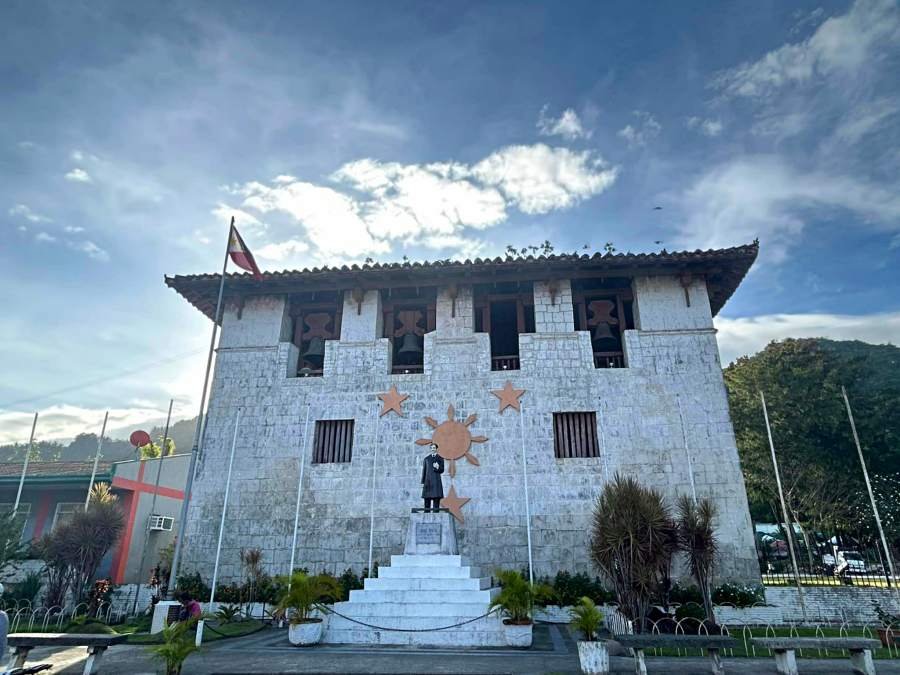
Exploring the church complex further, I found myself surrounded by history, from the blockhouse-turned-bell-tower to the adjoining buildings that once formed part of the fortification. As I stood in the church plaza, which was believed to be a former burial ground, I couldn’t help but ponder the stories hidden beneath the ground, revealed through archaeological excavations. Each discovery, from burial sites to ancient artifacts, painted a vivid picture of Boljoon’s past, enriching my understanding of its cultural heritage.
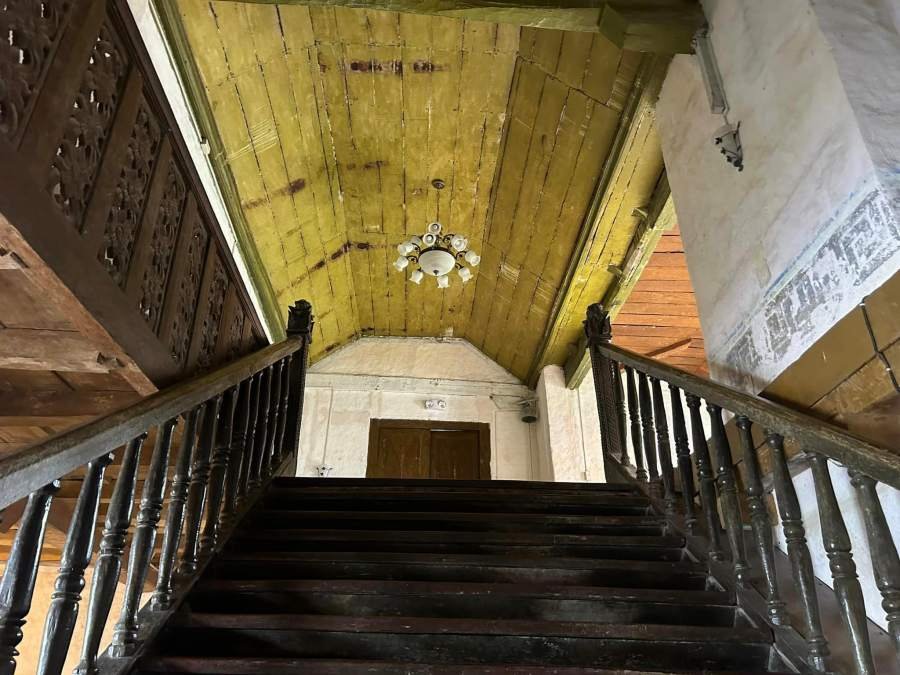
As we ventured deeper into the church complex, a sense of wonder enveloped us, each corner revealing a new chapter in Boljoon’s storied history. The museum housed within the convent offered a glimpse into the town’s past, with artifacts and relics painting a vivid picture of life in colonial Cebu. Outside, the ruins of the Ilihan Watchtower stood as silent sentinels of a bygone era, their weathered stones bearing witness to the tumultuous tides of history. It was a humbling reminder of the town’s strategic importance, and its role as a bastion against the perils of piracy and invasion.
![Boljoon Church [ Archdiocesan Shrine of Patrocinio de Maria Santisima ]](https://www.fabasianlifestyle.com/wp-content/uploads/2024/03/boljoon-430023289_10159877402783017_8560711415873680767_n.jpg)
The Mystique of Patrocinio de Maria: A Symbol of Devotion
While not being a Catholic, I found myself amazed by the church’s features, particularly the well-preserved clothes of the patron saint. Standing before the statue of Patrocinio de Maria, the beloved patroness of Boljoon, her serene countenance exuded a sense of divine grace, offering a beacon of hope and solace for all visitors. This experience was a poignant moment, where time seemed to stand still, bridging the gap between past and present in a tapestry of faith and devotion.
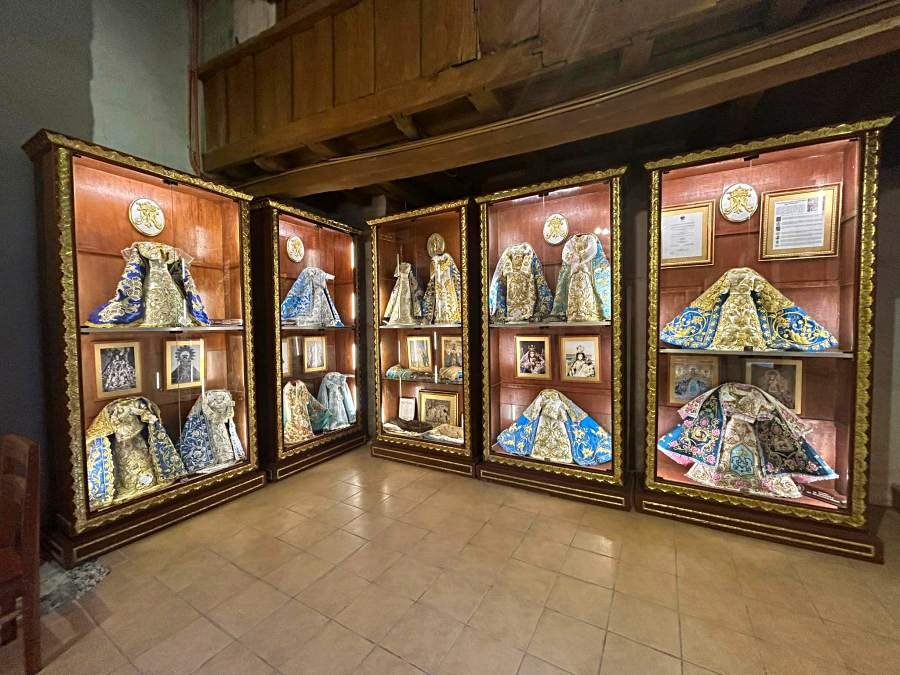
The statue of Patrocinio de Maria, dressed in regal vestments, symbolized more than just a religious icon; it represented the enduring faith and cultural significance of Boljoon Church. Despite not sharing the same religious beliefs, I couldn’t help but appreciate the beauty and historical importance of this sacred place. The statue’s presence was a reminder of the rich history and cultural heritage that Boljoon Church embodies, transcending individual beliefs to inspire awe and reverence.
![Boljoon Church [ Archdiocesan Shrine of Patrocinio de Maria Santisima ]](https://www.fabasianlifestyle.com/wp-content/uploads/2024/03/boljoon-429684855_10159877401973017_2667936404761949863_n.jpg)
Conclusion: Reflections on the Timeless Beauty of Boljoon Church
As we bid farewell to Nuestra Señora del Patrocinio de Maria Parish Church, its ancient stones echoing with the whispers of centuries past, I couldn’t help but feel a sense of reverence for the town’s enduring spirit. Boljoon, with its rich tapestry of history and culture, serves as a beacon of hope in an ever-changing world, a testament to the enduring power of faith and heritage.
![Boljoon Church [ Archdiocesan Shrine of Patrocinio de Maria Santisima ]](https://www.fabasianlifestyle.com/wp-content/uploads/2024/03/boljoon-429642087_10159877402243017_1834760908892019937_n.jpg)
As I pen down my reflections on this unforgettable journey, I am reminded of the profound impact that the place has had on my soul. In its hallowed halls and sacred spaces, I found not only a connection to the past but also a renewed sense of purpose and gratitude for the beauty that surrounds us.
In the end, Boljoon remains etched in my memory as more than just a destination—it is a sanctuary of the soul, a place where the echoes of history mingle with the whispers of faith, inviting all who dare to venture within its hallowed walls to discover the true essence of our shared humanity.
![Boljoon Church [ Archdiocesan Shrine of Patrocinio de Maria Santisima ]](https://www.fabasianlifestyle.com/wp-content/uploads/2024/03/boljoon-429658129_10159877402918017_7157080995049827859_n.jpg)
More Stories
- Senate Hearing on NPC | Fostering Responsible Franchise Ownership
- Teambuilding with the City Agriculture Office of Himamaylan
- International Market Entry Strategies
- Exporting Strategies Reaching the Global Market
- A New Dawn : CENECO Employees Embrace Change with Negros Power
- Negros Power Franchise Approved in Congress
- Supervisory Seminar for Quan Delicacies and Pueblo
- Advertising Research
- Personal Entrepreneurial Competencies: A Guide to Success


